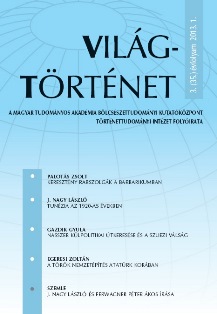A török nemzetépítés Atatürk korában
Turkish Nation Building during the Atatürk Era
Author(s): Zoltán EgeresiSubject(s): History
Published by: Magyar Tudományos Akadémia Bölcsészettudományi Kutatóközpont Történettudományi Intézet
Summary/Abstract: The paper aims at describing the process of Turkish nation building during the first decades of 20th century, especially focusing on the developments of the Atatürk government. The paper applies the modernist approach which provides a plausible framework to analyse the identity policy of the late Ottoman and early Republican period. It argues that the Turkish identity was mainly created during the Atatürk era, applying national symbols (anthem, flag, national holidays linked to the War of independence) and forming the main pillar of Turkish history based on pre-Ottoman period. Simultaneously, as the tool for the creation of modern nation, in 1928 a new Latin alphabet was introduced in order to replace the Arabic and Persian ones. In line with the canonization of the base of Turkish nationalism, a new institutional system was formed during Atatürk era, like Turkish History and Language Institutes, the network of People’s house and schools or museums. This policy was also accompanied by homogenization processes against national minorities (Jews, Kurds, Lazs), as well as settlement policies.
Journal: Világtörténet
- Issue Year: 2013
- Issue No: 1
- Page Range: 125-144
- Page Count: 20
- Language: Hungarian

